Somewhere between the wild rush of 2013’s “The Wolf of Wall Street,” the confessional serenity of 2016’s “Silence,” and the ramifications of a lost conscience in “The Irishman,” the kinetic energy of Martin Scorsese’s storytelling has grown more contemplative. The viewer sits with characters more often than watching their lives flash by through freeze-frames and fast cuts. Scorsese’s meditative approach, particularly regarding his last few achievements, is just as compelling as his quicker-paced pictures. Fully on board with the filmmaker’s vision and rhythm is his longtime collaborator, the legendary editor Thelma Schoonmaker. Her precise editing is the driving force behind so many of the sensations felt in watching a Scorsese film. Schoonmaker’s ability to find the movement and flow of a story is unparalleled. Whether at rapid speed (“Goodfellas“) or slower-moving (“Killers of the Flower Moon“), she can make a long film feel light as air while also weighted by choices that amplify the film’s themes and character development.
Such is the case for the latest Scorsese and Schoonmaker collaboration, “Killers of the Flower Moon,” an expansive crime drama that examines the manipulation and erasure of the Osage community. The film has led to continuous discussions about Osage Nation representation, the questioning of narrative perspective, and the responsibility of telling Indigenous stories. The existence of “Killers of the Flower Moon,” its thoughtful ending, in particular, stresses the importance of preserving stories that have been long buried. Part of the film’s immersive quality is how the sprawling plot points and themes are mapped out through moments of conscious editing. Whether it’s a swift montage of historical photographs or cuts to a particular character for an emotional reaction, plenty of examples convey the incredible singularity of Schoonmaker’s talent.
The fact that she continues to be at the top of her craft several decades into her career is an inspiring feat. She is one of the most celebrated and awarded film editors. Of her eight Oscar nominations, she has won three times: 1980’s “Raging Bull” (her third collaboration with Scorsese), 2004’s “The Aviator,” and 2006’s “The Departed.” Since winning her first Oscar (“Raging Bull”), Schoonmaker has edited nearly all of Scorsese’s feature films with an unwavering energy. If nominated for “Killers of the Flower Moon,” she will hold the record for most Film Editing nominations of all time. If she wins the category, she will set an even more exciting record of becoming the most-awarded film editor in Oscar history.
Schoonmaker is simply in a league of her own, and given her many accolades over the years, the Academy agrees. Will the Academy agree a fourth time and award Best Editing to “Killers of the Flower Moon?” Schoonmaker has a steady chance of setting both aforementioned records; one of the driving forces supporting her editing on the film is how she tackles a three-and-a-half-hour runtime. Plus how, she adapts to the vast material of David Grann’s 2017 novel “Killers of the Flower Moon: The Osage Murders and the Birth of the FBI.” The film explores the devastating history of the Native American Osage community. In 1920s Oklahoma, the discovery of oil on the Osage Nation Reservation led to a boom of wealth for the community. This brought on a reign of terror through systemic greed, racism, manipulation, and the murder of Osage people by white men.
“Killers of the Flower Moon” marks a more meditative rhythm and style of editing than what audiences are used to seeing from Schoonmaker. The film moves slowly but not in a way that drags or diminishes the storytelling. Down to the last minute, time is well spent in conveying the scope of what’s happening to the Osage community. From the mapping out of details to the buildup of terror, the editing helps to create an absorbing dramatic structure. With the combination of imagery and cutting of dialogue, Schoonmaker maintains a strong current that runs through the film. It mirrors the reign of terror that slowly seeps into the frame until the entire picture is engulfed in murder. The insidiousness starts with Ernest Burkhart (Leonardo DiCaprio) and his uncle William Hale (Robert De Niro) in conversation and slowly introduces a sinister group of oppressors. The editing conveys Hill’s intentions in a way that the viewer grasps how far his manipulation and moral decay reaches. Simultaneously, the terror is partly shown from the perspective of Mollie Burkhart (a tremendous Lily Gladstone), whose family members are murdered one by one until she herself is in grave danger.
From the decision to reintroduce certain elements of the story to the final scene’s meta-textual display of how history gets rewritten, and true crime becomes exploited, Schoonmaker’s editing strongly aligns with Scorsese’s vision throughout. As a further example of Schoonmaker’s craft, here are five moments from “Killers of the Flower Moon” that speak to her impact on shaping the film.
****SPOILERS AHEAD FOR “KILLERS OF THE FLOWER MOON” ****
The Opening Montage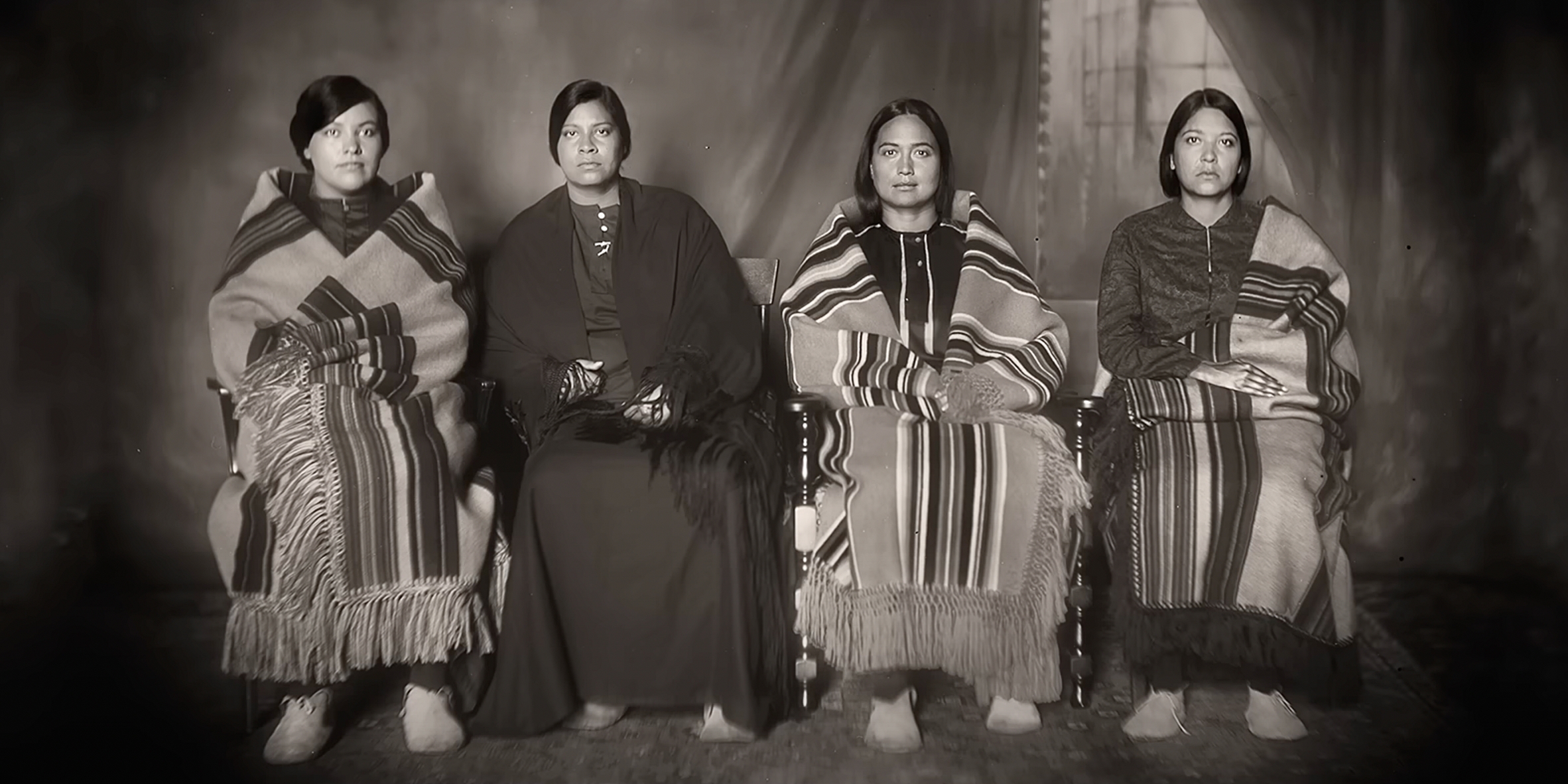 Accompanied by Robbie Robertson’s engaging score, the film’s beginning sets an eye-opening tone. The slow-motion oil boom, followed by a black-and-white image compilation of Osage characters in the 1920s, stresses what the community lost. The montage is preceded with a feeling of joy (when the Osage dance around the oil as it surges from the ground). With the recreation of photographs that follow, the viewer gets an immediate impact of the oil discovery. The swiftness of editing in this montage is a powerful way to begin the film, framing the story within the Osage community’s rich history. The quick cuts from one image to the next establish a sense of scope and perspective. The transitioning shot from black-and-white imagery to color strongly prompts the introduction of Ernest’s character and the oppressors who are about to infiltrate the Osage community.
Accompanied by Robbie Robertson’s engaging score, the film’s beginning sets an eye-opening tone. The slow-motion oil boom, followed by a black-and-white image compilation of Osage characters in the 1920s, stresses what the community lost. The montage is preceded with a feeling of joy (when the Osage dance around the oil as it surges from the ground). With the recreation of photographs that follow, the viewer gets an immediate impact of the oil discovery. The swiftness of editing in this montage is a powerful way to begin the film, framing the story within the Osage community’s rich history. The quick cuts from one image to the next establish a sense of scope and perspective. The transitioning shot from black-and-white imagery to color strongly prompts the introduction of Ernest’s character and the oppressors who are about to infiltrate the Osage community.
The Owl Visions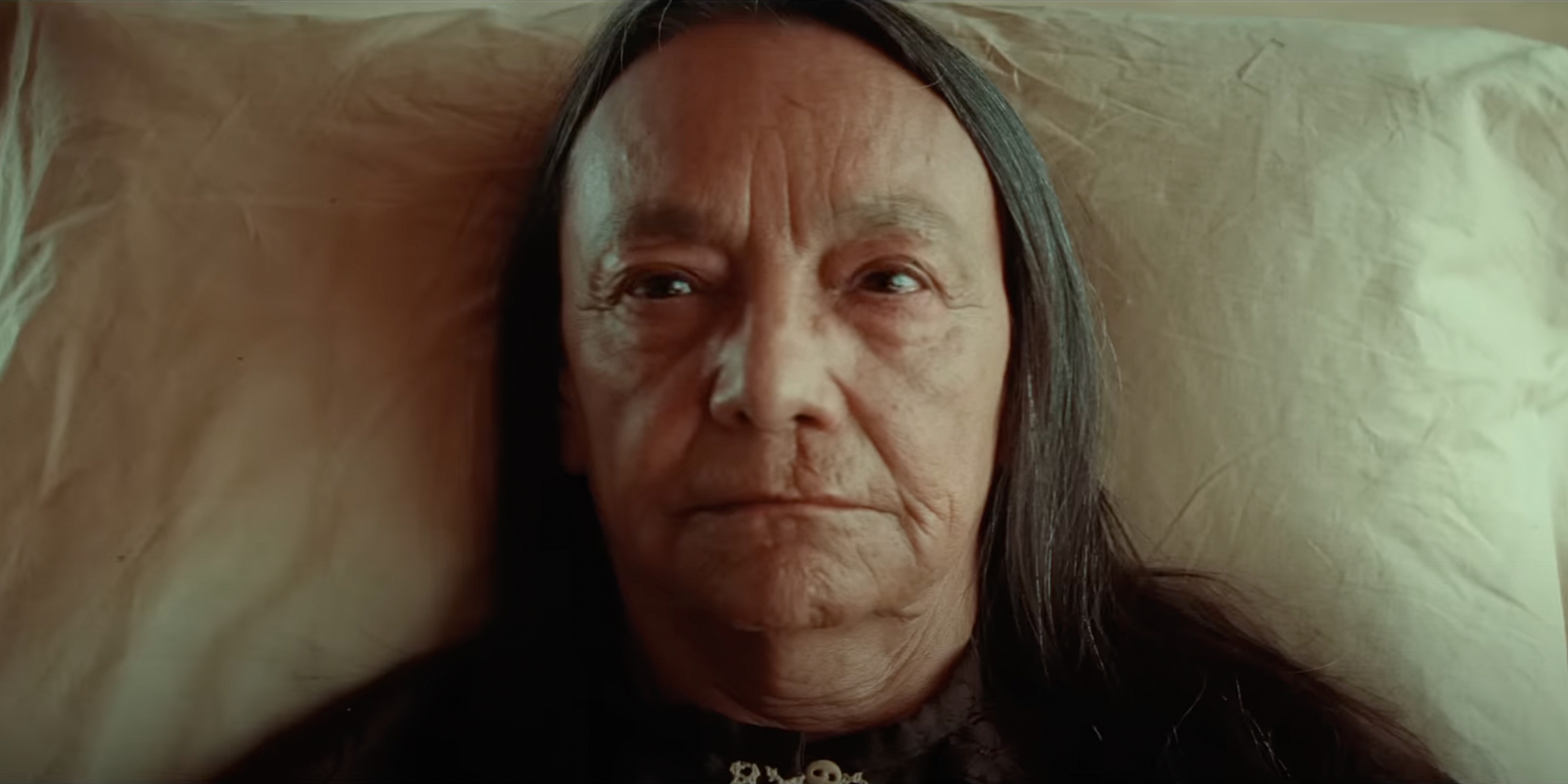 During a scene when Mollie’s family is at home, her ill mother, Lizzie (Tattoo Cardinal), suddenly becomes wide-eyed when an owl flies through the window and perches on the room floor. The suddenness of the animal’s appearance creates a pin-drop moment. The camera sits with Lizzie and the owl, lost in the surrealism of this exchange. The cultural significance of the owl, Lizzie momentarily explains to Mollie, is that its appearance means her death is imminent. The editing shines not only in this particular scene but also in the precise choice of when the owl reappears in the film. When Mollie’s condition worsens from the insulin shots given by Ernest, she becomes bedridden in a state of delirium, and the owl appears at her side. The pacing of when the owl visits both characters establishes just how far the oppressors’ actions reach and how quickly.
During a scene when Mollie’s family is at home, her ill mother, Lizzie (Tattoo Cardinal), suddenly becomes wide-eyed when an owl flies through the window and perches on the room floor. The suddenness of the animal’s appearance creates a pin-drop moment. The camera sits with Lizzie and the owl, lost in the surrealism of this exchange. The cultural significance of the owl, Lizzie momentarily explains to Mollie, is that its appearance means her death is imminent. The editing shines not only in this particular scene but also in the precise choice of when the owl reappears in the film. When Mollie’s condition worsens from the insulin shots given by Ernest, she becomes bedridden in a state of delirium, and the owl appears at her side. The pacing of when the owl visits both characters establishes just how far the oppressors’ actions reach and how quickly.
The Council Meeting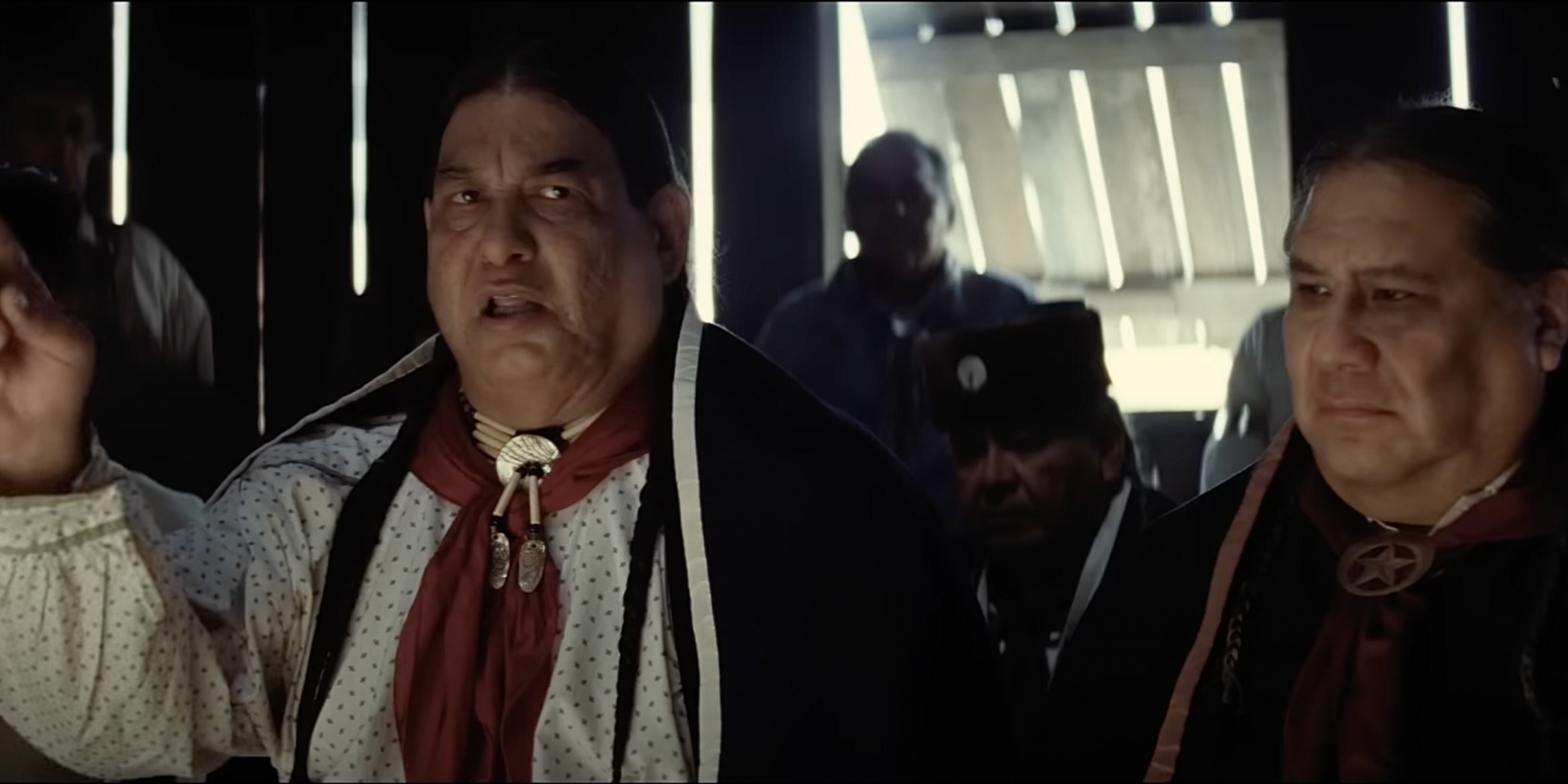 Following the suspicious deaths of several community members, a group of Osage families hold a meeting to deliberate on their course of action. The discussion includes planning a trip to Washington, DC so that the murders are brought to the attention of President Coolidge and the Bureau of Investigation (later known as the FBI). As Mollie narrates in the first act of the film, not one investigation is being conducted for any of the murders. During the meeting, while some of the spokesmen voice the pain and suffering of their community, the editing makes a point of cutting to William Hale’s character. His intentions are clear as day; from the beginning of the film, the viewer knows what a despicable, sinister, and duplicitous person he is. The deliberate cuts to Hale’s facial expressions reinforce the evil hiding in plain sight. His calculated silence, in addition to the nerve of his offering a monetary reward for the person who can solve who’s behind the murders, essentially sums up the rotten core of the character. In just a few camera cuts, and with De Niro’s performance, the viewer can feel the apathy through his presence. Schoonmaker’s editing amplifies the complicity that pours out of this sequence and how it plays into the subtext of the character.
Following the suspicious deaths of several community members, a group of Osage families hold a meeting to deliberate on their course of action. The discussion includes planning a trip to Washington, DC so that the murders are brought to the attention of President Coolidge and the Bureau of Investigation (later known as the FBI). As Mollie narrates in the first act of the film, not one investigation is being conducted for any of the murders. During the meeting, while some of the spokesmen voice the pain and suffering of their community, the editing makes a point of cutting to William Hale’s character. His intentions are clear as day; from the beginning of the film, the viewer knows what a despicable, sinister, and duplicitous person he is. The deliberate cuts to Hale’s facial expressions reinforce the evil hiding in plain sight. His calculated silence, in addition to the nerve of his offering a monetary reward for the person who can solve who’s behind the murders, essentially sums up the rotten core of the character. In just a few camera cuts, and with De Niro’s performance, the viewer can feel the apathy through his presence. Schoonmaker’s editing amplifies the complicity that pours out of this sequence and how it plays into the subtext of the character.
The House Bombing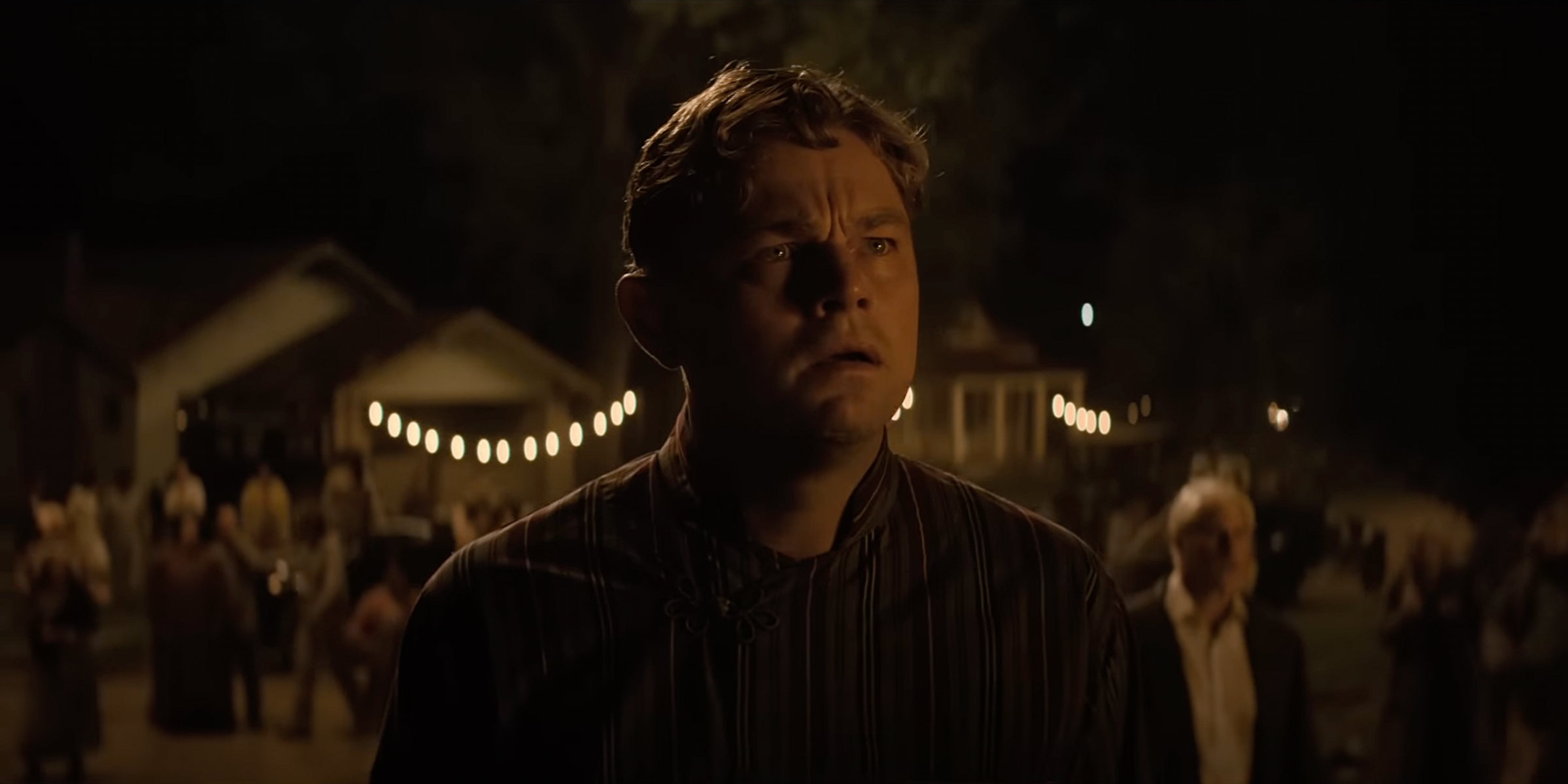 Yet another tragedy of the story is the bombing of the Smith house, from which Mollie loses another sister in the family, Reta. The murder of Reta (Janae Collins), her husband Bill (Jason Isbell), and their housekeeper Nettie (Shonagh Smith) becomes a turning point in the story concerning the federal government’s involvement in the Osage investigations. The house bombing is referenced earlier in the film; through dialogue, the viewer knows how this murder is going to happen and who is responsible for it. This knowledge does not make the house bombing feel any less shocking when it occurs in the film. Instead of a heavily dramatized buildup, the scene is sudden and shakes you to your core. The editing of this sequence has a revelatory quality in what it explores about the characters. Ernest “investigates” the wreckage, knowing full well about the murder, yet appears horrified by its finality and how far his uncle’s evil reaches. The camera follows Ernest back into his house and toward Mollie, who has taken shelter in the basement. One look from him speaks volumes; the edit to Mollie’s reaction and the guttural cry she lets from having bottled up so much pain inside is among the film’s most powerful moments.
Yet another tragedy of the story is the bombing of the Smith house, from which Mollie loses another sister in the family, Reta. The murder of Reta (Janae Collins), her husband Bill (Jason Isbell), and their housekeeper Nettie (Shonagh Smith) becomes a turning point in the story concerning the federal government’s involvement in the Osage investigations. The house bombing is referenced earlier in the film; through dialogue, the viewer knows how this murder is going to happen and who is responsible for it. This knowledge does not make the house bombing feel any less shocking when it occurs in the film. Instead of a heavily dramatized buildup, the scene is sudden and shakes you to your core. The editing of this sequence has a revelatory quality in what it explores about the characters. Ernest “investigates” the wreckage, knowing full well about the murder, yet appears horrified by its finality and how far his uncle’s evil reaches. The camera follows Ernest back into his house and toward Mollie, who has taken shelter in the basement. One look from him speaks volumes; the edit to Mollie’s reaction and the guttural cry she lets from having bottled up so much pain inside is among the film’s most powerful moments.
The Ranch Fire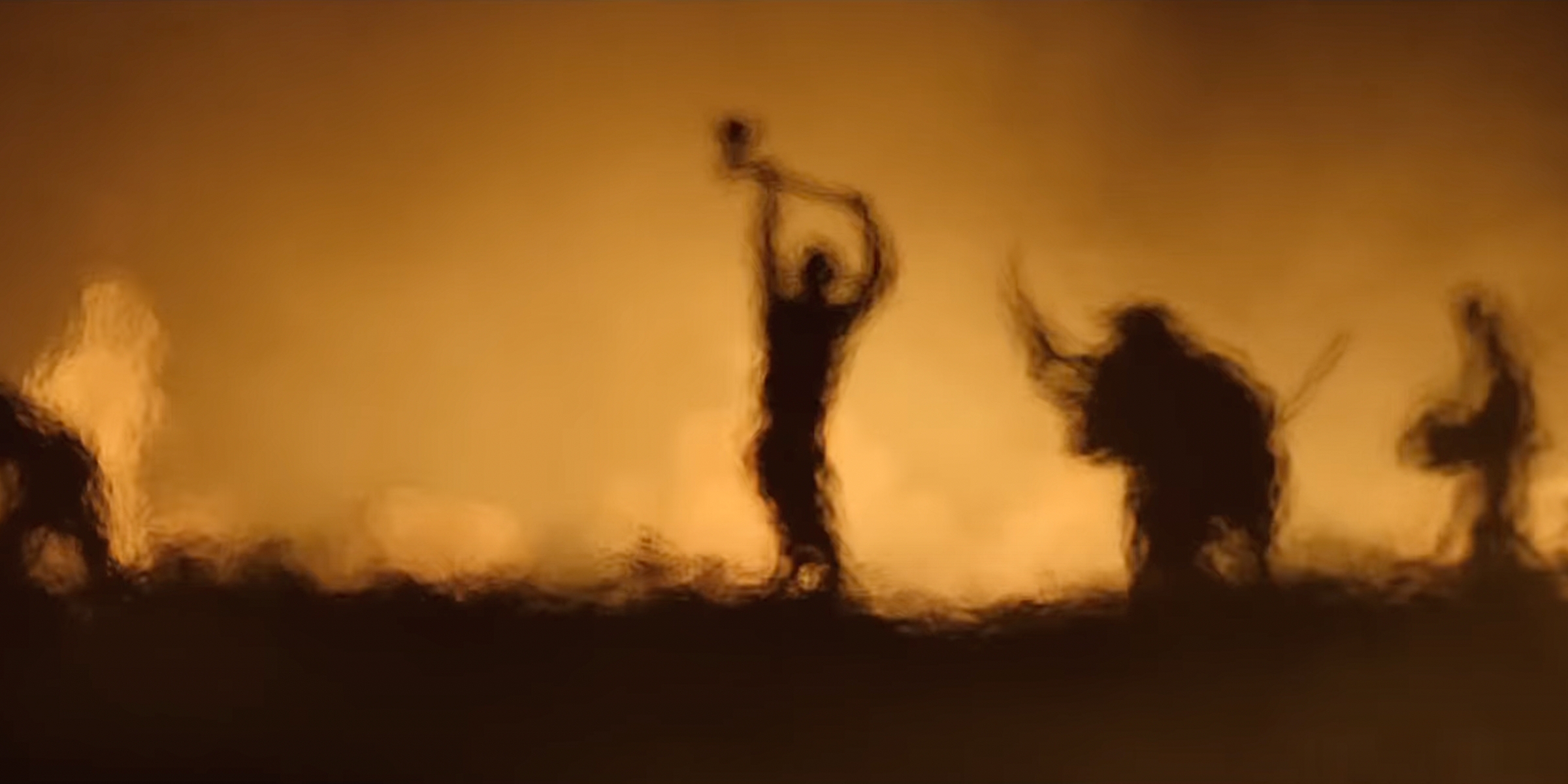 With remarkable cinematography by Rodrigo Prieto, one of the most stirring scenes of the film is the ranch fire sequence. When Hale (De Niro) is denied a life insurance policy on Henry Roan (William Belleau), he takes out a fire insurance policy and burns his ranch, yet another instance of manipulation and greed. The camera lingers on a haunting fire, capturing the blurred and melting silhouettes of those destroying the land. The sequence speaks volumes in the sensation it leaves you with. Watching the fire burn through the windows of Mollie and Ernest’s room is an unforgettable picture. Through distorted imagery and the cuts to Ernest’s face as he watches on (witnessing his uncle’s evil), the film captures hell on earth. So much is conveyed through the splicing of imagery and the destruction that pours from each frame, once again exemplary of how aligned Schoonmaker is to Scorsese’s vision.
With remarkable cinematography by Rodrigo Prieto, one of the most stirring scenes of the film is the ranch fire sequence. When Hale (De Niro) is denied a life insurance policy on Henry Roan (William Belleau), he takes out a fire insurance policy and burns his ranch, yet another instance of manipulation and greed. The camera lingers on a haunting fire, capturing the blurred and melting silhouettes of those destroying the land. The sequence speaks volumes in the sensation it leaves you with. Watching the fire burn through the windows of Mollie and Ernest’s room is an unforgettable picture. Through distorted imagery and the cuts to Ernest’s face as he watches on (witnessing his uncle’s evil), the film captures hell on earth. So much is conveyed through the splicing of imagery and the destruction that pours from each frame, once again exemplary of how aligned Schoonmaker is to Scorsese’s vision.
What do you think is the current frontrunner for Best Film Editing at this year’s Academy Awards? Do you think Thelma Schoonmaker will make history by becoming the sole most Oscar-nominated film editor of all time? Do you think she’ll make even more history by winning the most Oscars for Best Film Editing ever this year with “Killers of the Flower Moon?” Please let us know in the comments section below or on Next Best Picture’s Twitter account and check out our latest Oscar predictions here.






